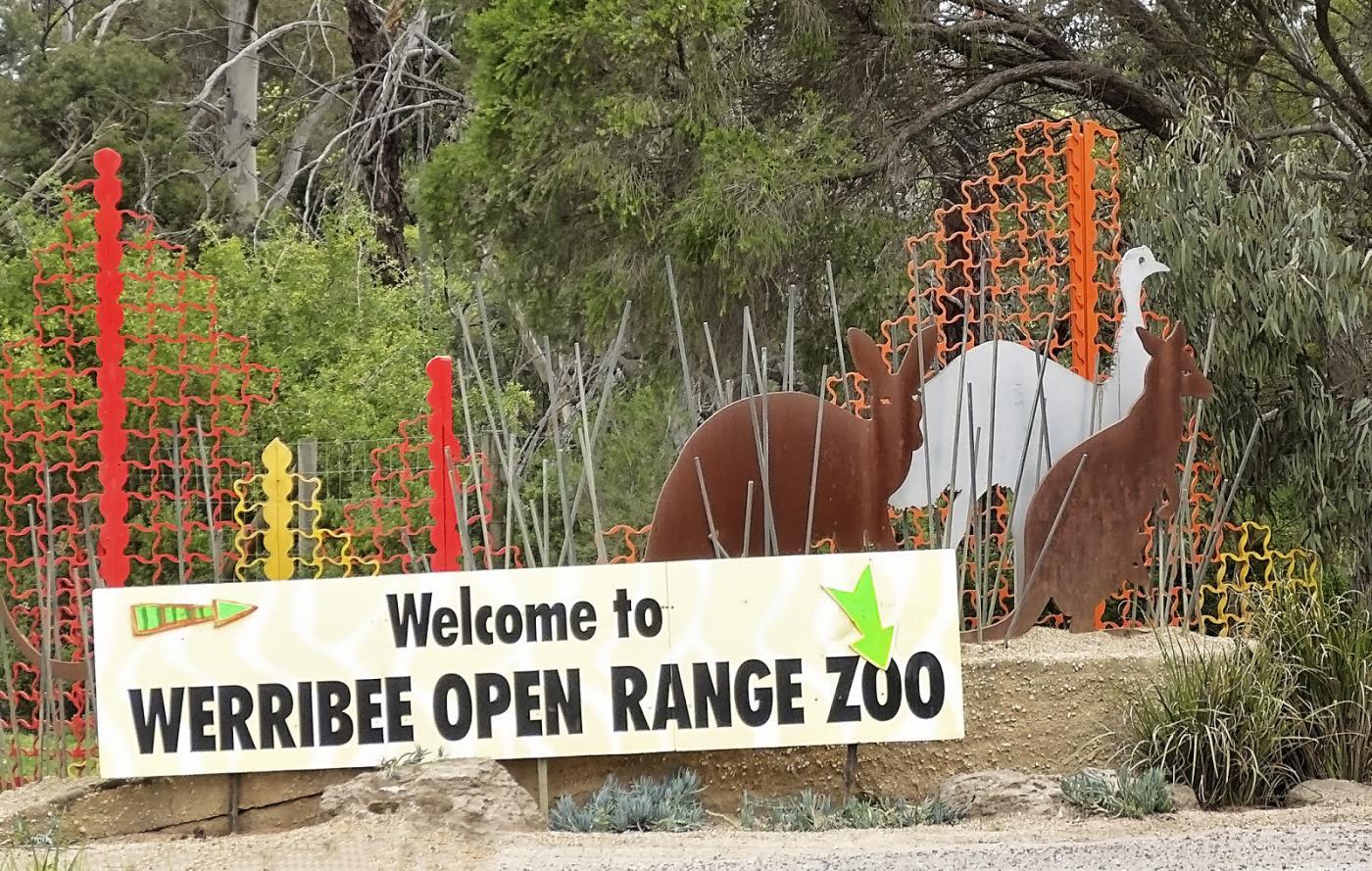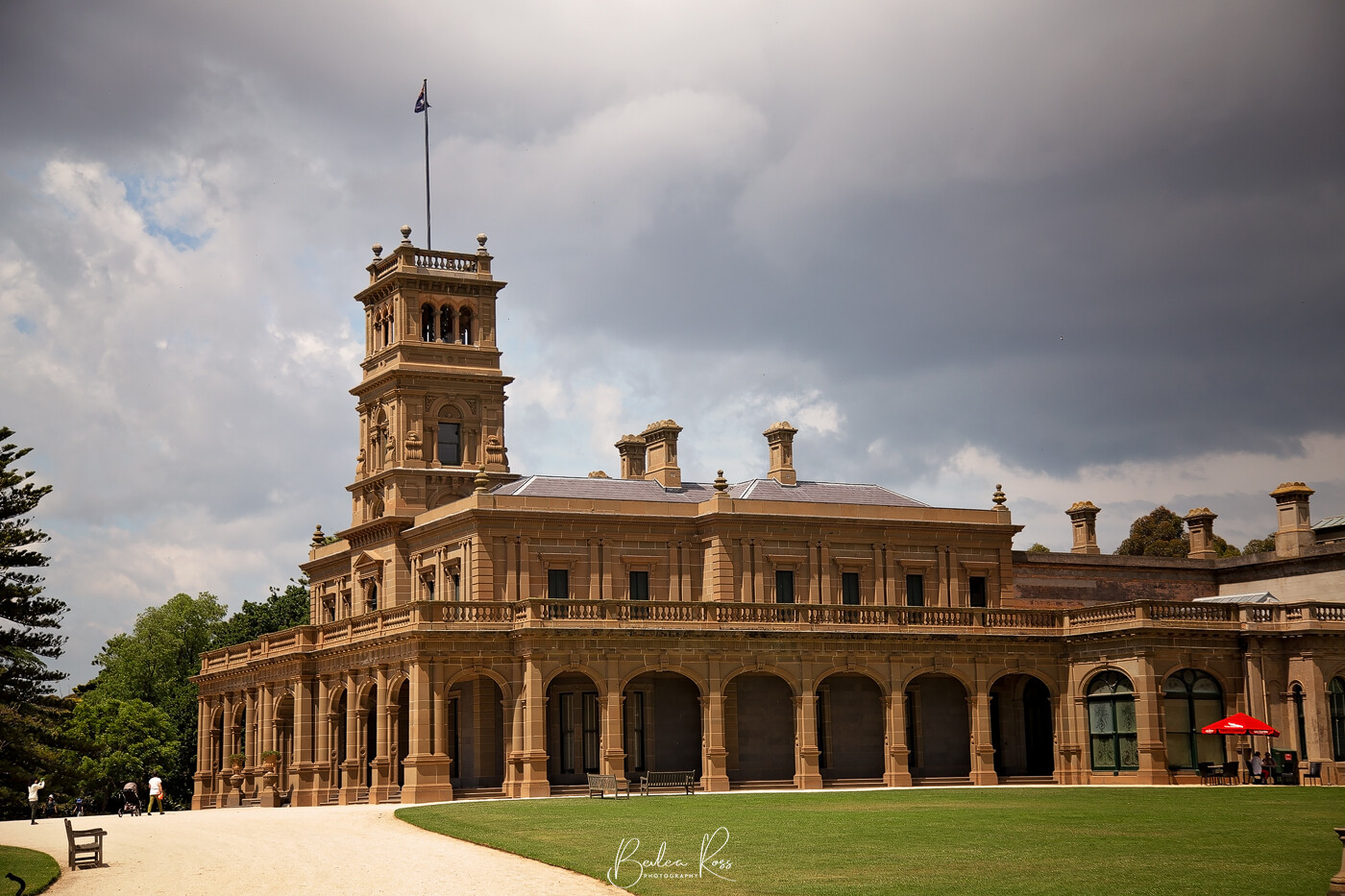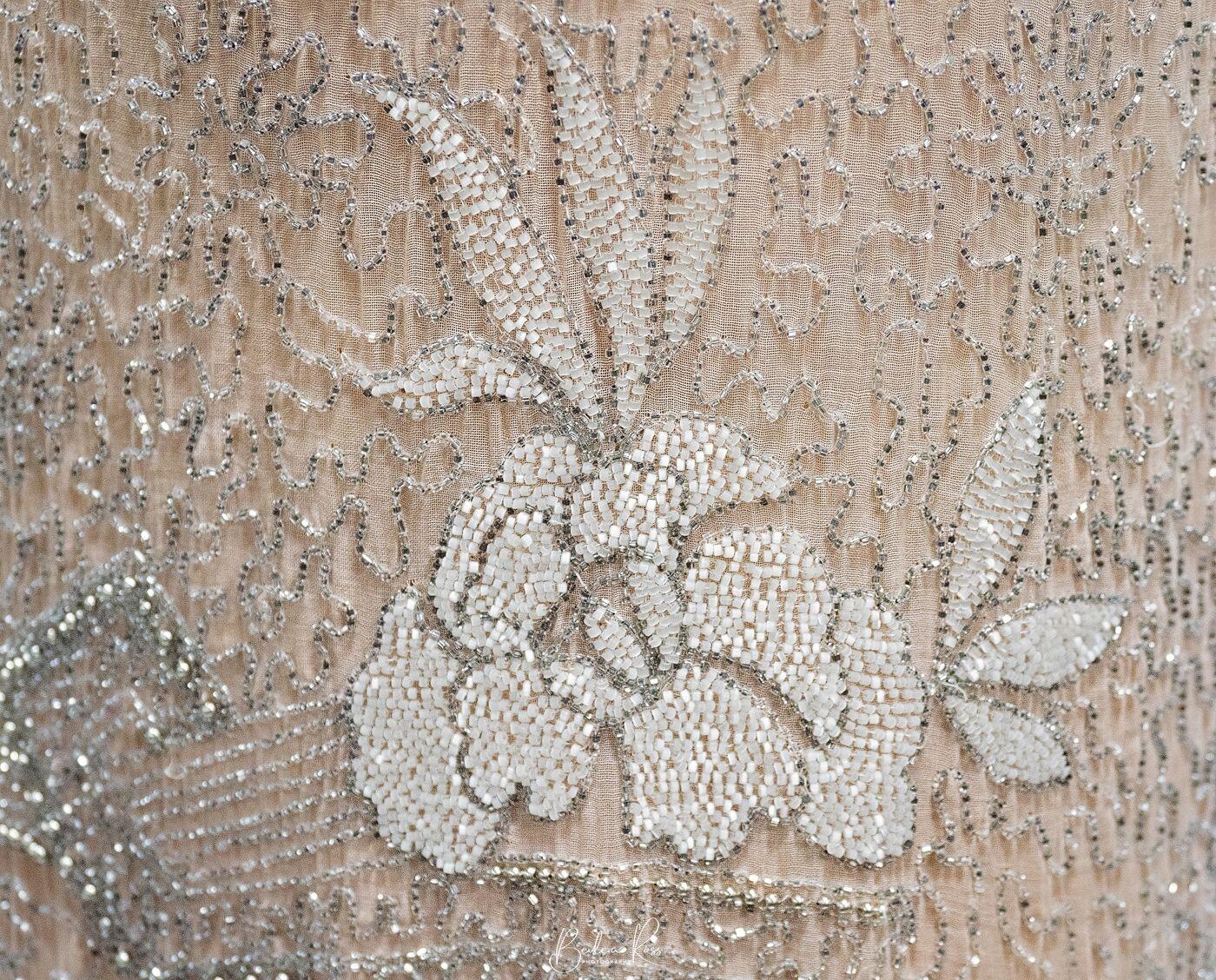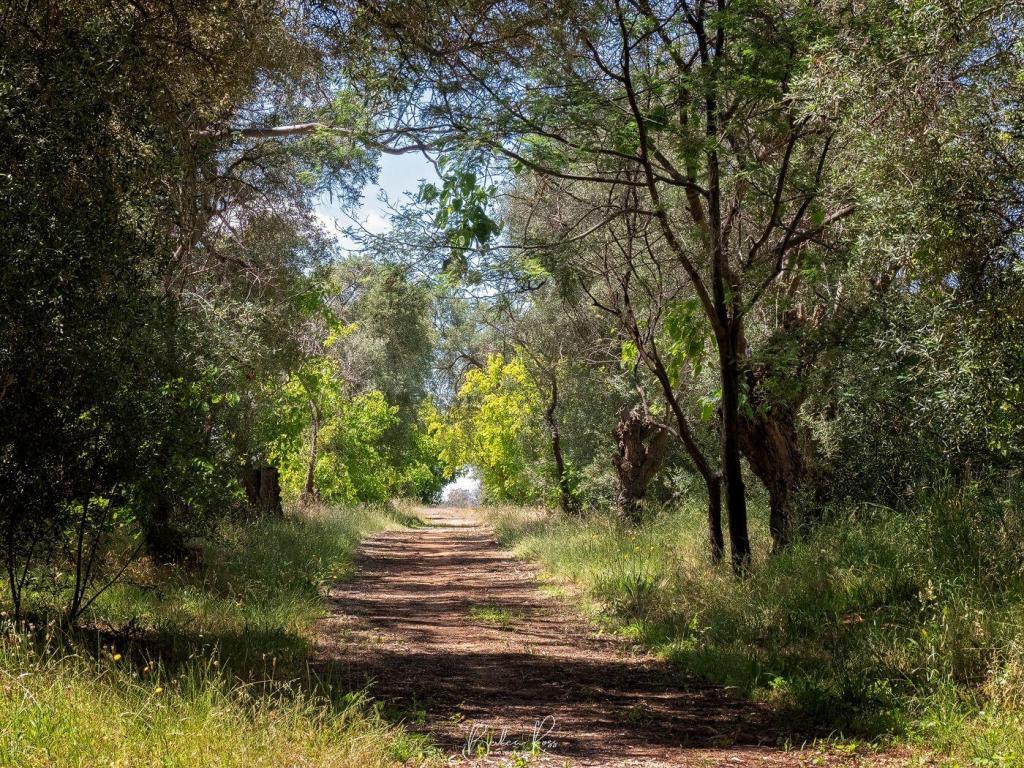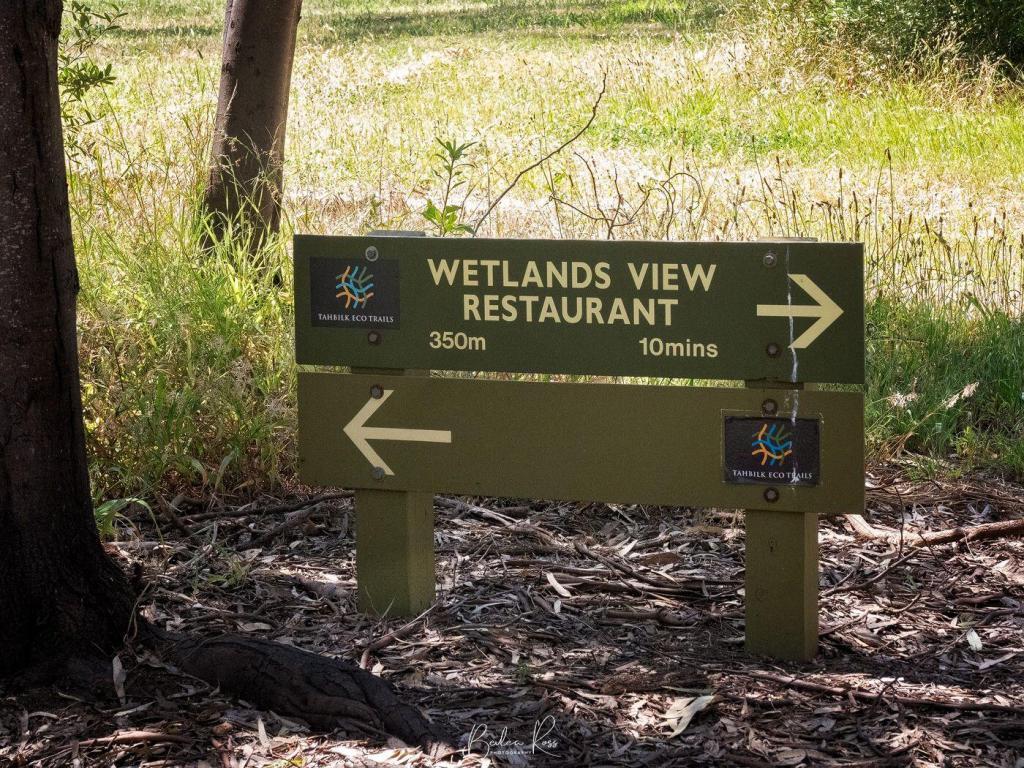Tag:victoria
While WWII and the battlegrounds of Europe seemed a world away from Australian shores, for some regional Victorians, it was right on their doorstep. The Graytown POW camp was one of eight POW camps established in the Tatura district, holding between 4,000 to 8,000 prisoners of war. Camps 1 and 2 were located at Tatura, camps 3 and 4 at Rushworth, Dhurringile Mansion, camp 13 at Murchison, camp 5 at Myrtleford and camp 6 at Graytown. Camps 1 and 2 were for single males, mostly German and Italian. Camp 3 was for mostly German family groups
Camp 6 near Graytown and Camp 5 near Myrtleford housed enemy servicemen who had been captured from around the world and then transported to Australia. The remaining camps near Tatura held migrants deemed a security risk to Australia by virtue of their nationality.

taken December 1stst, 1943
Graytown
The town was surveyed in 1869 and named ‘Moormbool’ before being renamed Graytown after Moses William Gray, a parliamentarian for the local Rodney electorate between 1860-1864. Graytown is a gold mining ghost town between Heathcote and Nagambie. At its peak in 1868, it had an estimated population of 20,000 Graytown and was known as Spring Creek when gold was discovered in September 1868. Over the next few months, over 30,000 people arrived, drawn by the lure of striking it rich.
The businesses and public houses followed. Tents and rough shanties made way for wooden buildings and by June 1869, there were two hundred and sixteen beer houses! The town also sported thirty-six butchers, fourteen bakeries, seventeen general stores, five banks, four chemists, six doctors, two newspapers, five soft drink manufacturers, ten drapers, eight restaurants, six tobacconists, ten boot makers, six timber yards, eighteen blacksmiths, two watchmakers, three ironmongers, two tin smiths and seventy-two unknown stores.
A Cobb & Co Station and nineteen Police Officers also serviced the town. Life was hard, and illegal mining was a problem, along with larrikinism. Families often had their children sleep on the floor to avoid stray revolver shots. However, the alluvial gold was soon exhausted; by 1870, the population had dropped to around 150. In 1870 a flood inundated the mines and destroyed several buildings. By the 1960s, most of the local population had moved on and the buildings relocated to other towns.
The Kormoran
The German merchant raider Kormoran held 393 officers and men. Of these, 315 officers and men and three of the four Chinese (taken captive when the Kormoran sank the Eurylochus 10 months earlier) were saved when the Kormoran was sunk. Unfortunately, approximately 20 of the crew were killed during the battle, with the remainder drowning when their overloaded raft capsized. The Aquitania picked some up on her way to Sydney; the Trocas recovered others on her way to Fremantle.

Once on the land, nineteen were hospitalised while the remainder were distributed between barracks. Following the interrogations, they were then transferred to Victoria’s internment camps. The officers came to Victoria on the liner Duntroon on December 13th, while the sailors were transported by train in two groups. Two prisoners deemed too ill to travel stayed behind in Fremantle. One of them, Erich Meyer, died three months later of lung cancer. He became the only crew member to die on Australian soil.
Dhurringile

Arriving in Melbourne, the prisoners were transferred to Murchison POW camp, where they were joined by those whom the Aquitania had rescued. The officers were then transferred to Dhurringile, a 65-room mansion about ten miles from the Murchison camp. The military had leased Dhurringile as accommodation for prisoners of war. One of the most successful POW escapes happened at Dhurringile in 1945 when 17 officers and three batmen tunnelled 14 feet down from a large crockery room and under a perimeter fence. The heritage-listed mansion is now a working dairy farm, minimum security prison, and part of Corrections Victoria.

Camp #6
The Graytown POW camp held captured sailors and was designated Camp 6. Approximately 250 Italian and German POWs were detained at Camp 6 Graytown POW Camp. The German POWs mainly were crew members from the German raider ship “Kormoran”, which had sunk the HMAS Sydney off the Western Australian coast. Additionally, some Finnish seamen were also held at Camp 6 Graytown.

Each compound was enclosed by a double row of wire fencing 2 metres high with coiled barbed wire in between. Guard towers stood at each corner, with the perimeter lit at night. Each of the timber-framed barracks held twenty men. Kitchens, mess huts, shower blocks, laundries and latrines were all located within each compound.

The surrounding forest had been cut for firewood since Graytowns settlement, and POWs were put to work cutting firewood in the forest. The area now forms Graytown State Forest, and timber cutting has been illegal since 2002.

All the players are German POWs.
Repatriation
By 1943 the Kormoran men had been transferred from Murchison to Camp 6 (a timber felling camp) at Graytown. Others were transferred to Tatura. Finally, the prisoners returned to Europe on the Orontes in 1947.




Werribee Open Range Zoo is an African-themed open-range zoo in Werribee, 32 kms southwest of Melbourne. It is part of Zoos Victoria, which also includes Melbourne Zoo, Healesville Sanctuary, and Kyabram Fauna Park. Werribee open range zoo is situated on approximately 225 hectares (560 acres), located on the Werribee River escarpment in Werribee Park, adjacent to the Werribee Mansion on land that was initially part of the Chirnside estate.

History
The land was originally part of the Chirnside family estate (Werribee mansion) before being sold to the Catholic church. In 1975 the Victorian Government purchased the land and broke it into four parcels – Werribee Zoo, Werribee Park Golf Club, Werribee Mansion and the National Equestrian Centre.

At first, Werribee zoo was used as extra pasture land for Melbourne zoo’s surplus animals. Then in 1977, the Board of Zoos Victoria decided to create an open-range zoo based on the African Savannah species of animals. Most of the animals came to Werribee from Melbourne Zoo. However, the zebras came from Rotterdam zoo, and the hippos were supplied by Whipsnade animal park in the UK. Werribee zoo officially opened to the public in 1983.
Early Days
When Werribee Open Range Zoo opened, work was still ongoing. Visitors would board a bus at Werribee Park Mansion, pay their entry fee on board the bus, and were then driven to the zoo adjacent to Werribee mansion.

In 1996 the bistro, gift shop, and walking trail were added. Next, in 1997, the Volcanic Plains trail. Finally, 1999 saw the arrival of four rhinos from South Africa. Before long, the breeding program commenced, and a rhino calf was born in 2002. In the subsequent years, the zoo continued to grow. Lions on the Edge habitat opened in 2004, producing three cubs in 2015 and two more litters since. Kubu River Hippos in 2006 and African Wildlife habitat in 2008.

In 2011, the gorilla exhibit opened with the arrival of an adult silverback and his two sons from Melbourne Zoo. The koala habitat opened in 2014, along with a bandicoot hideaway for the critically endangered eastern barred bandicoots. Squirrel gliders, dunnarts, tawny frogmouths, and striped legless lizards also live here.

Sheru, a five-year-old male lion, arrived from Sydney zoo in March 2022, joining the two lionesses, Nilo and Asali. He is considered the ideal age to assume the role of pride male and lead his own pride.

Main Attractions
Safari Tour: the forty-minute bus tour travels through the 45-hectare open savannah section. It runs on the hour daily and is included in your admission cost. The safari bus passes roaming bison, camels, elands, waterbuck, ostrich, scimitar oryx and Przewalski’s horse before going through Australia’s only drive-through hippo exhibit – the Kubu River Hippo enclosure. The bus then heads past southern white rhinos, giraffes and zebras (with the elephants from Melbourne zoo joining them in 2024).
Australian Journey – this trail will take you past kangaroos, emus, brolgas, tammar wallabies and orange-bellied parrots.
Pula Reserve Walking Trail takes you past the lions, vervet monkeys, cheetahs, African wild dogs, and western lowland gorillas.
Meerkat Bistro and Gift Shop
The bistro and gift are inside the front entrance, and the meerkat’s glass enclosure is beside the bistro. Visitors can watch them play while dining. There is also a kids menu for the little ones and seasonal food, wines and beer for the adults.

In April 2008, it was announced Warner Village Theme Parks proposed that a theme park, known as African Safari World, was to be built within the grounds of the zoo. However, on July 1, 2008, the proposed theme park plans were indefinitely postponed, with the Government citing the potential $100 million cost to the taxpayer. It was also a concern that it would negatively impact the animals as well as conservation and research programs.
The Future of the Zoo
In 2020 the Victorian Government announced an $84 million upgrade to Werribee zoo. Much of the massive 225 hectares (560 acres) that make up Werribee zoo is unused. As part of the upgrade, 22 hectares of that unused space is being prepared for the elephant enclosure, a significant upgrade from the 2 hectares they currently have at Melbourne Zoo. (Coincidentally, the entire footprint of Melbourne zoo is 22 hectares! Construction commenced in 2021 and is due for completion in 2024.


Also planned is an expanded rhino retreat, a prairie landscape for the bison, an expansion of the lion exhibit and a new hyena clan. Additionally, a tree-top gondola, the sky safari, will carry visitors from one side of the zoo to the other.
Special Experiences
Slumber Safari – 2 days of access and one night in a luxury lodge at the zoo. Includes an animal encounter, a unique early fully hosted safari and meet the keeper. Plus dinner and breakfast. $380pp
Deluxe Safari Adventure – Travel across the savannah with a personal guide in a smaller safari vehicle. Unlike the big bus, this one gets closer and stops so you can capture photographs. I did the tour once and loved it. $56 (plus zoo entry)
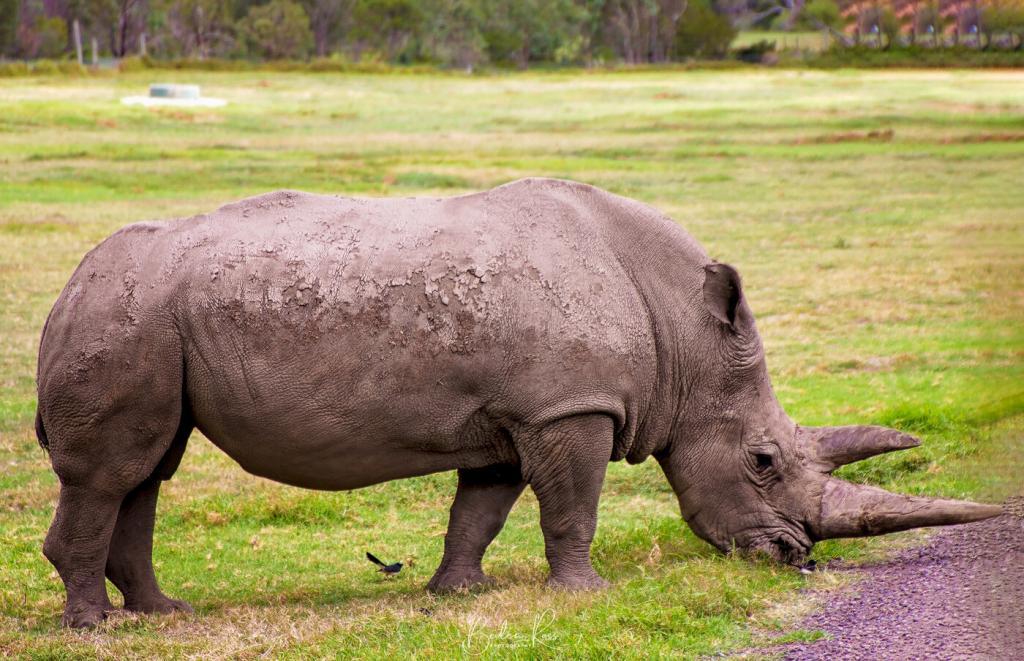

Where is it?
Werribee Zoo is located on K Road Werribee. They are open from 9 am to 5 pm each day.
Adult entry is $42; Seniors are $38 and Concession $31.50. Children under16 are free on weekends, public holidays and school holidays. At all other times, children are $21. Entry is free for zoo members.
What’s Nearby?
Nearby Werribee Open Range zoo, you will find Werribee Mansion and the State Rose Garden. Both are worth a visit, especially during spring when the roses are flowering. Also nearby is Shadowfax Winery. The Werribee Gorge State Park is just down the road – another gorgeous spot for a walk or picnic.
Werribee Park Mansion is one of Victoria’s largest and most opulent properties. The 60-room mansion, flowing across several wings, was built between 1874 and 1877 in the Renaissance Revival style by the pioneering pastoralists Thomas Chirnside (1815-1887) and his brother Andrew Chirnside (1818-1890), who emigrated to Australia from Scotland and founded the “Chirnside Pastoral Empire“.
The lush interior contains original furniture, an entry hall with a Minton encaustic tiled floor, niches, Corinthian pilasters, and free-standing columns leading to a grand staircase. Off the main entrance are the main reception rooms, a library and dining room.

Thomas Chirnside
Thomas Chirnside was born in Berwickshire, Scotland, the elder son of Robert Chirnside and Mary Fairs. In January 1839, at age twenty-three, Thomas Chirnside arrived in Adelaide from Liverpool on the ship Bardaster. He then made his way to Sydney in March. Returning to Melbourne, after drought in NSW affected his fortunes, the Chirnside brothers bought the land at Werribee.
As a member of the Victorian Acclimatisation Society, Thomas began importing animals from the old country, such as red deer, foxes, hares, pheasants, and partridges. It wasn’t long before “fine old English gentlemen” were hunting the new arrivals around the vast expanse of Werribee Park.
Western District Families


Thomas returned to Scotland for a holiday in 1845, where he fell in love with his first cousin Mary Begbie. He asked her parents for her hand in marriage, but she refused to move to Australia. His brother Andrew then travelled back to Scotland for a visit with a request from his brother. Bring back Mary any way he could. So in 1852, Andrew returned with Mary. However, he brought her back as his wife. Not quite the outcome Thomas wanted. Regardless, the brothers remained close, though Thomas remained a bachelor for the rest of his life.

The grand staircase
Thomas, and his brother Andrew, built the mansion at their Werribee park property over three years. In today’s money, the mansion cost nine million dollars. Notably, the impressive grand staircase is almost identical to the Barwon Park staircase. In fact, it’s a case of the Chirnsides emulating the Austins, as Barwon Park was completed six years before the Werribee mansion.

In 1877, when complete, Andrew, Mary and their three children moved in. Thomas continued to live nearby at the Point Cook homestead; however, he later moved in with Andrew and Mary. The mansion’s extensive workforce worked across ten acres of farmland and the house staff. The Chirnsides also entertained the shire ratepayers and their families. It was not unusual for the Chirnsides to hold picnics with games, bands and dancing for a thousand people, with Thomas appearing on his horse to resounding cheers. Thomas was a strict Sabbatarian and did not allow any work to take place on Sundays.

In 1887, in ill health, suffering depression, and believing himself bankrupt, Thomas shot himself in the laundry with his shotgun. Andrew then inherited the property and Thomas’s estate.
Sadly, Andrew passed away from heart disease just three years later, leaving his personal estate to Mary and his real estate holdings to his two youngest sons. However, as per his will, Mary was permitted to continue at Werribee park, along with a generous allowance until her death. She died, aged eighty-one, in 1908 at a private hospital in Colac due to burns after her hair had caught alight from a bedside candle.

Werribee, after the Chirnside’s
Unfortunately, George couldn’t mirror the success of his father and uncle, and with dwindling fortunes, he sold the mansion to Phillip Lock, a wealthy grazier from Warnambool, in 1922. Lock, in turn, sold it to the Catholic church in 1923. Under the church’s ownership, it became a seminary, Corpus Christi College. Several wings were added by the monks residing there. These wings have been converted to the 5-star Lancemore Hotel.

Finally, in 1973 the Victorian government bought the property from the Catholic church and restored the mansion and grounds to their former glory, renaming it Werribee Park Mansion. Three years later, the mansion was featured in the film The Devil’s Playground. In 1982, it was one of the sets used in the musical comedy, The Pirate Movie. The mansion was then depicted as an English manor in the children’s comedy series, The Genie From Down Under in 1996 and episodes of Miss Fishers Murder Mysteries. Werribee Park Mansion was added to the Victorian Heritage Register in April 1987.

Visiting Werribee Mansion
Open Daily entry is $11.10 for Adults, and children 4-15 years are $8.00. Adult concession is $8.00, and a family of 2 adults and two children is $34.80. Audio tours are available for an extra $3.80. Entry to the mansion also gives you free access to the gardens and State Rose Garden.
Melbourne Zoo, considered among the best zoos in the world, was founded by the Acclimatisation Society of Victoria in October 1857 in Richmond. The zoo opened in its current location on October 6 1862, when it moved from Richmond to Royal Park on land donated by the City of Melbourne. The higher grounds of Royal Park were considered more suitable for the animal’s health than the damp ‘Richmond Paddocks’.
History
Modelled on London zoo, it is Australia’s oldest zoo and one of the world’s best. Like other zoos in Sydney, Perth and Adelaide, the early days of the zoo practised ‘acclimatisation’ of exotic species. The zoo housed animals in small enclosures at the Royal Botanical Gardens, where they recovered from the long sea voyage before being introduced to the Australian environment. Pople in those days thought animals such as blackbirds, pheasants, quail, salmon, camels, goats and sheep could prove valuable sources of food and income.
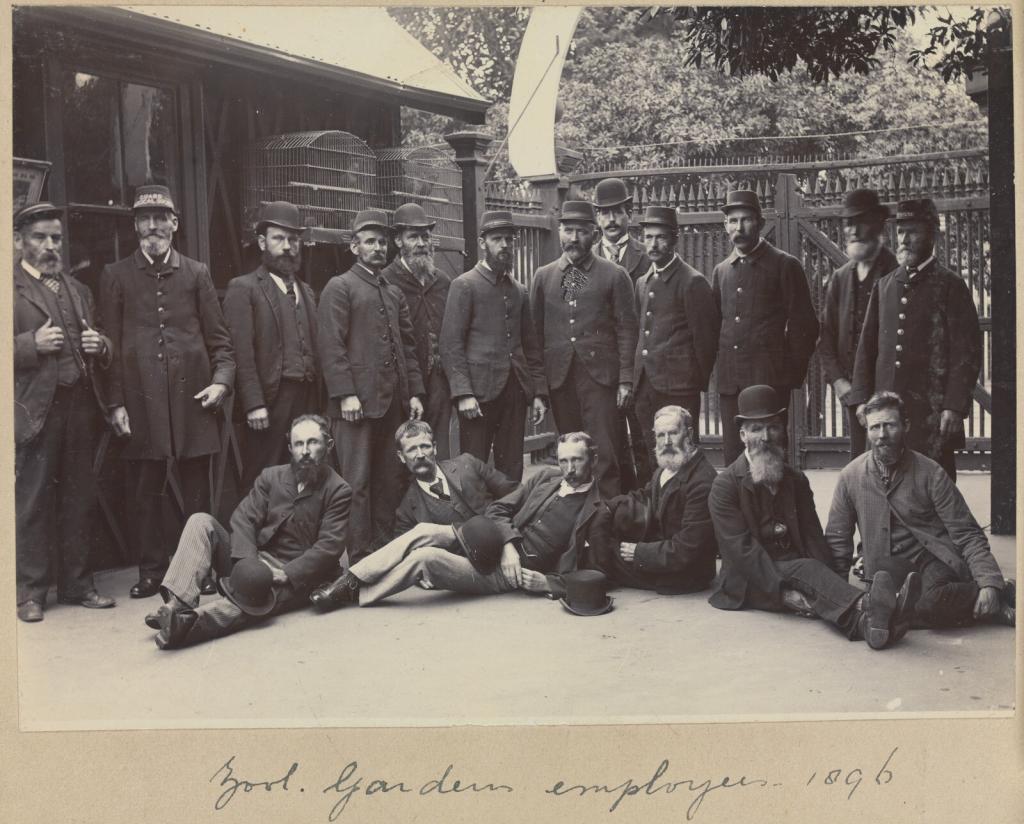
However, despite the move to Royal Park, by the late 1860s, the zoo was in financial trouble. The public had lost interest, and Albert Alexander Cochrane Le Souëf (1828-1902) was appointed the first Director of the Zoo. To save the zoo, he made several significant changes. Le Souëf expanded the zoo’s role by building a collection of animals for the amusement and education of Melbourne’s citizens. Additionally, he developed extensive gardens and picnic areas. By 1880, Melbourne Zoo’s animal collection included lions, tigers, a panther, deer and hoofed animals such as sheep and cows. All of which were considered exotic for the colony at the time.
Early Animals
In 1881, an elephant and an orangutan arrived, followed by rhinos, hippos, bison, zebra and giraffe. Wallace the lion, came in 1891 and was famous for his love of classical music. During the first half of the 1900s, visitors could ride on Queenie the Elephant, throw peanuts to the bears or watch Mollie, the orangutan smoke a cigarette in her enclosure.
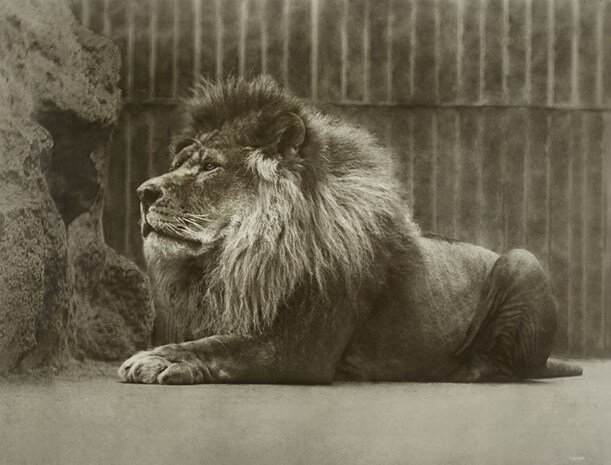
Mollie the Orangutan was one of the zoo’s most beloved characters in the early 1900s due to her intelligence, quirky personality, and the human-like habits she was taught. She came to the zoo in 1901 at only a few months old and remained a crowd favourite until she died in 1923. From the late 1800s and early 1900s, the humanisation of animals was common in zoos worldwide, and Melbourne Zoo was not exempt from the practice. Mollie was known for her ability to light and smoke cigarettes and drink alcohol and her elaborate ritual for setting up her bed each night, using hessian sacks in her cage.

Unfortunately, Mollie also had a habit of setting her bedding on fire due to her talent for lighting matches. After she partially burned down her wooden enclosure, it was replaced with a concrete one. Following her death, Mollie was stuffed and displayed at the Melbourne Zoo.
Elephant Rides
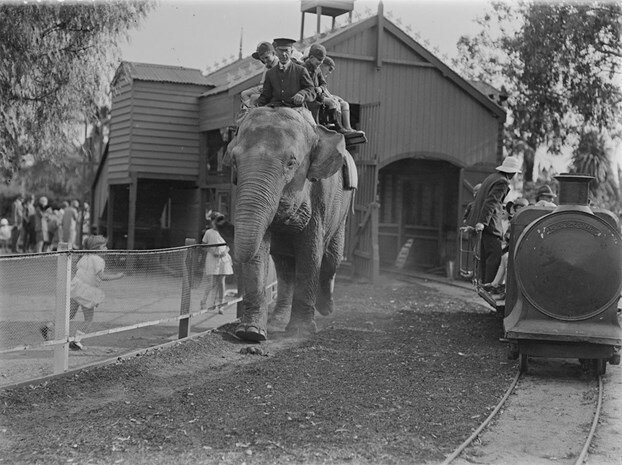
Melbourne Zoo had three elephants, Queenie, Betty and Peggy. Queenie, loved for her gentle nature, was a significant zoo attraction for over 40 years at Melbourne zoo. She walked a circuit giving daily rides to up to 500 children for tuppence each. Children would place apples and peanuts on the circuit posts for her to eat as she passed by. However, on September 19, 1944, she sadly crushed and killed her keeper at the end of her working day.
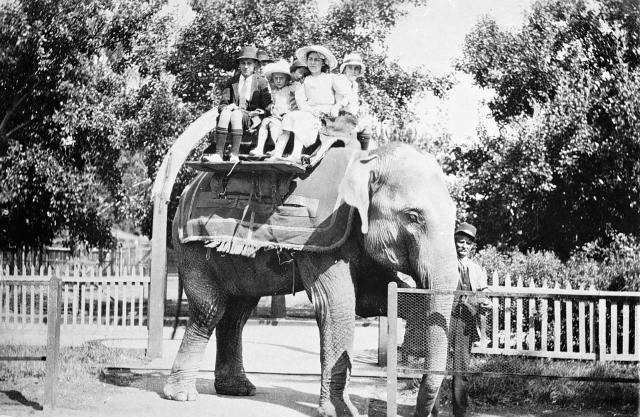
Following the incident, the zoo retired Queenie from giving rides and Peggy and Betty took over giving rides. After public support, the zoo decided to keep her as an exhibit. However, in 1945, she was put down. The reason given for this was that it was wartime, fodder was scarce, and the zoo could not afford to keep her. By 1962 elephant rides at the zoo had ceased for safety reasons.
Ethical Zoos
Thankfully times have changed. Modern zoos of today bear no resemblance to their predecessors. Capturing animals in the wild for display is now illegal. The cramped, concrete and brick steel-barred cages are gone. Instead, their natural bio-climatic habitat is recreated. Subsequently, they have room to roam. Melbourne zoo is part of a world-leading organisation dedicated to fighting extinction. As a not-for-profit organisation, the funds raised from visitors are ploughed back into helping wildlife. Zoos Victoria – the parent organisation of Melbourne Zoo, Healesville Zoo, and Werribee Zoo is involved with more captive breeding programs than any other organisation in Australia.

“I justify zoos providing they are scientific, providing they are selective about what they keep and provided they keep them to the highest possible standards. That’s okay by me,”
Sir David Attenborough
While zoos are loved by many, they still have their detractors. Opponents of zoos argue that conservation doesn’t justify keeping animals in captivity.
‘PETA doesn’t believe that animals are ours to use for entertainment,’
Claire Fryer, PETA
Captive Breeding Success
In 2021 Melbourne zoo released 8 critically endangered Plains Wanderers back into the wild. They also successfully bred 50 Grassland Earless Dragons, 4 Mountain Pygmy possums, 21 Helmeted Honeyeaters, and 11 Eastern Barred Bandicoots.

Moving the Elephants
Melbourne Zoo has a herd of 6 Asian elephants – at the time of this post, three are pregnant after conceiving naturally. The three elephants will all deliver towards the end of 2022. While the Melbourne Zoos ‘Trail of the Elephants‘ is ‘award-winning’, I have always disliked it. It’s a dusty or muddy enclosure (depending on the season) that seems way too small for them. They are rotated through three different enclosures, but none are large. However, the good news is the entire herd will move to Werribee Open Range Zoo in 2024 after an $87 million expansion. The new space at Werribee Zoo will give the elephants 22 hectares to roam across the savannah with the zebra, Rhino and Giraffe.

Visiting the zoo
Melbourne zoo is open every day from 9 am to 5 pm.
Adult entry is $42; Seniors are $38 and Concession $31.50. Children under16 are free on weekends, public holidays and school holidays. At all other times, children are $21.
Shepparton’s Museum of Vehicle Evolution claims to be one of the largest regional museums in Australia. And large it is. The vast expanse of vehicles under the one roof is impressive.

As well as the display of vintage vehicles, the museum also houses trucks that played a significant part in Shepparton’s transport history. Also on display is The Furphy Collection, the Farren Vintage Bicycle Collection, the Clayton Collection (gramophones, telephones and radio) and Loel Thomson Costume Collection.
History
Move began life in 2012 as the Shepparton Motor Museum and Collectables. A $5.3m upgrade started in September 2020. The Victorian Government provided a large grant. Funds also came from the Greater Shepparton City Council and donations from local residents. The upgrade finished in 2021 and expanded the museum’s floor space to 10,000 square metres. It was then renamed the Museum of Vehicle Evolution (Move)
Vehicle Collection

Taking up a large part of the ground floor is the vintage cars. Starting with early model Fords and progressing through Austins, massive Cadillacs, and Chevrolets to gleaming Mustangs and Thunderbirds. Visitors can stroll past a Ferrari the same model as Tom Selleck drove in Magnum or gaze in amazement at Johnny O’Keefes Thunderbird. The sheer size of the older cars is jaw-dropping. Compared to today’s modern vehicles, they are beyond huge with massive boots, bonnets and Of course, it goes without saying that parking them would be a nightmare in today’s crowded parking lots.










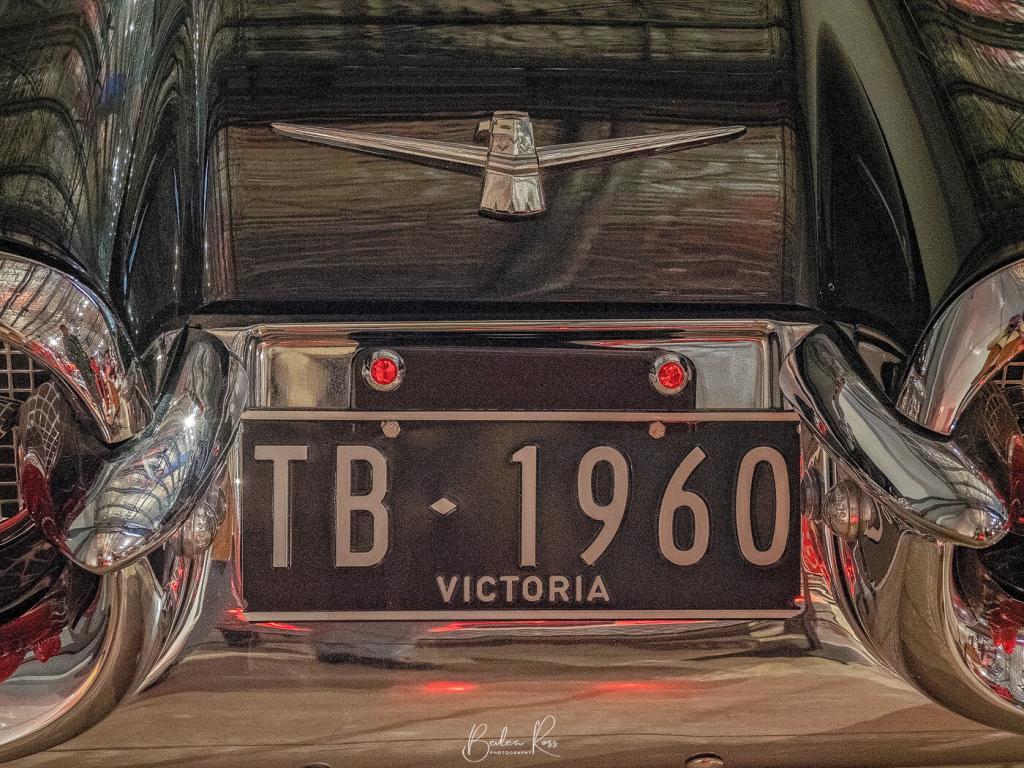
The Truck Collection
An extensive collection of trucks are also on display at Move. The curators approached Shepparton’s many trucking businesses for money and truck donations. As a result, trucks that once gathered dust in sheds are spruced up and sparkling under lights. There’s even a ’50s pioneer coach, a vintage fire truck and a truck driving simulator that kids of all ages will love.








The Furphy Collection
Born in Moonee Ponds to Irish immigrant parents in 1842, John Furphy began his blacksmith and wheelwright business at 22 years old. In time, he grew the company, adding a foundry and producing farm and agricultural implements. His patented grain stripper, which preceded the combine harvester, was awarded the first prize at the 1884 Grand National Show.

John is credited with inventing the “furphy”, a water cart used by the Australian Army in WWI. The term “Furphy” also became slang for gossip and tall stories, as many Furphy water cart drivers were supposedly spreaders of rumours and gossip.


The Farren Bicycle Collection
Over 30 years, Paul and Charlie Farren collected over 200 bicycles. Their collection includes bamboo bikes, adult tricycles, women’s side saddle bikes, tandems, and three-seater bikes that predate 1910. Look for the Penny Farthings; it’s hard to imagine riding these.

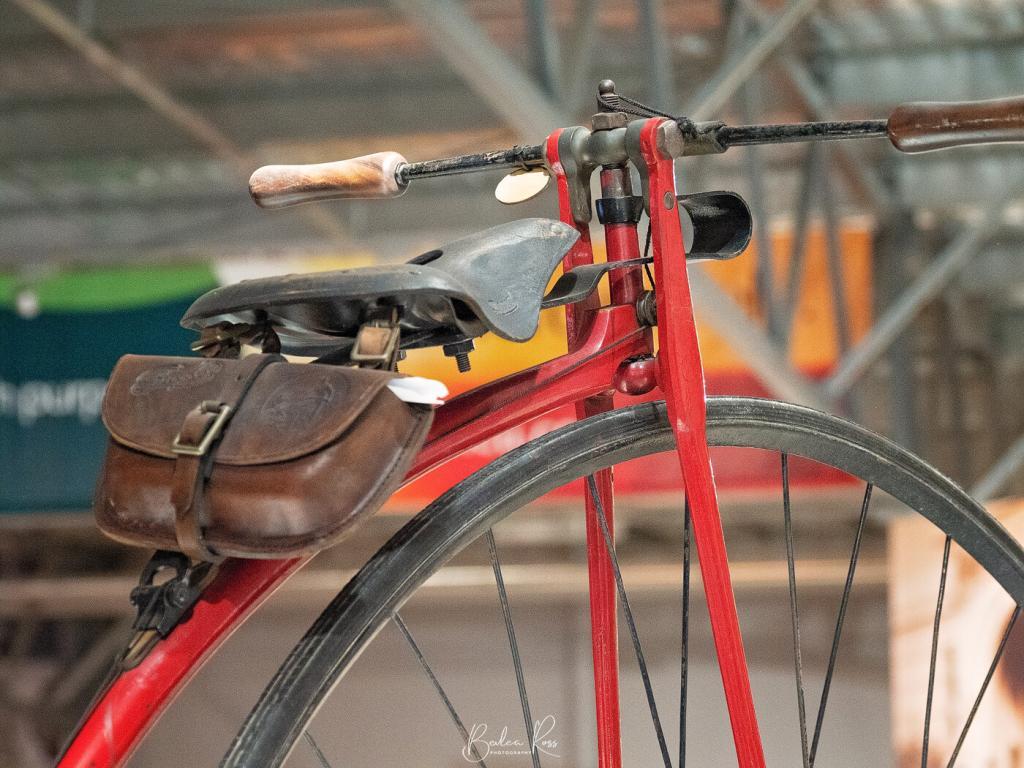

The Loel Thomson Costume Collection
Loel Thomson, a former school teacher, spent forty years collecting the history of everyday Australian fashion. She said it was a “hobby that grew”. While some items are high-quality designer fashion, most of the collection is clothing that ‘ordinary’ people wear. Her collection is primarily women’s wear. However, it also includes some men’s and childrenswear. Subsequently, the collection grew to include approximately 10,000 items. It is regarded as the world’s most extensive and best organised private collection of Australian fashion. Items in the collections date from the 1770s to 2000.


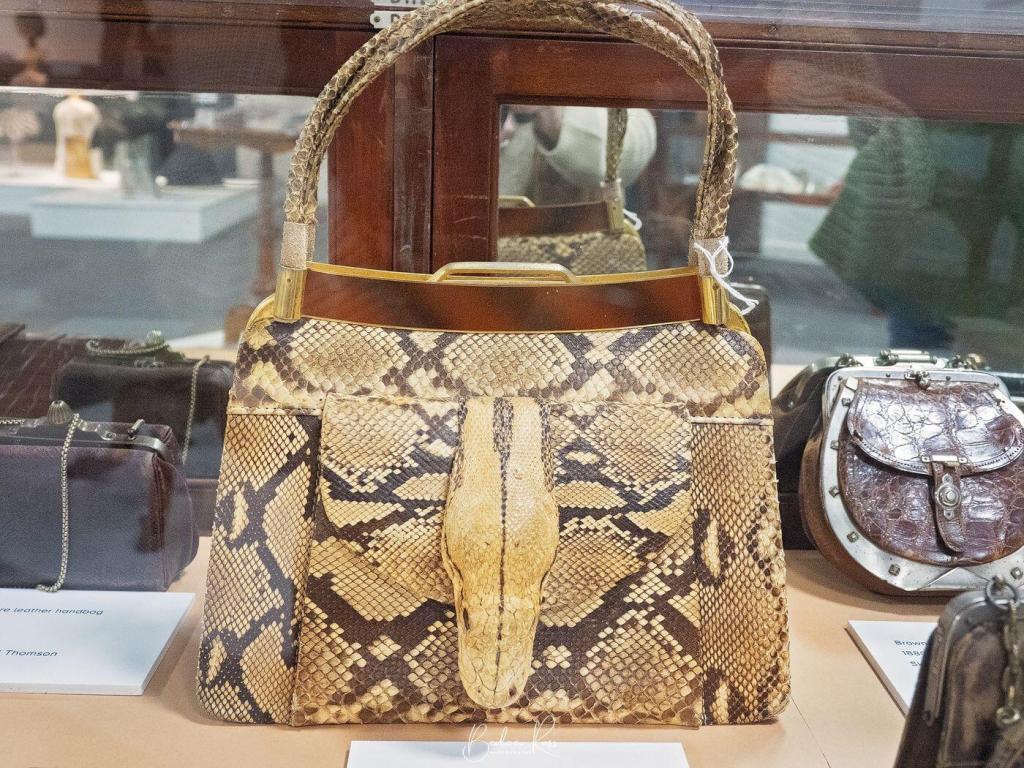
Move Museum is at 7723 Goulburn Valley Highway, Kialla, Vic 3631 and is open daily from 10 am to 4 pm.
Ticket prices depend on if you visit all or part of the museum. Entry to all the exhibitions is $24 for adults, $20 for Concessions, and for children 5 to 16, it’s $12. Children under 5 are free. (Family ticket $60)
At the end of Mangalore Road, just off the Goulburn Valley Highway, between Seymour and Shepparton, lies the Mangalore Flora and Fauna Reserve. As it’s only 78 hectares, it’s not a huge reserve. However, this makes for a pleasant walk if you don’t like long distances.

I visited in early June as winter was just starting to bite, and apart from the quiet serenity, there wasn’t much else. I did manage to find a few teeny tiny mushrooms, but they were certainly few and far between. Considering it was damp with puddles, moss and loads of lichen, I would have thought there would be more. Unfortunately, it seems the other side of the Great Dividing Range isn’t the best spot to go fungi hunting.

Birding Hotspot
Mangalore Flora and Fauna Reserve is on eBird but barely qualifies as a ‘hotspot’. It has 156 species of birds seen, but to be a genuine hotspot, it requires 200 species or more. Typically, as is usually my experience, I didn’t see one bird on the day I was there.


Flora Walk
The flora walk at Mangalore Flora and Fauna Reserve is 3.5km long on a well-defined, firm track of sandy clay and quartz pebbles. Rated easy on walkingmaps.com.au, the track is a circuit taking you through a Grey Box Eucalypt forest with native grevilleas and acacia trees. In spring, it’s said to be a wildflower haven with the native orchids, daisies and Lillies flowering. However, the brochures say fungi are found in winter, so maybe I was there too soon. According to the same brochure, echidnas, goannas, and kangaroos also inhabit the reserve, but again, they were invisible the day I was there.


Amenities
The car park at the end of the road will take about four cars; from there, it’s an easy walk into the reserve. There are no toilets, and you must take all your rubbish with you. Dogs, 4wd and dirt bikes are not permitted.
Winton Wetlands is an ‘ephemeral wetlands’, meaning the wet areas rise and fall, changing with the seasons, rainfall and climate. This regular cycle allows native species to breed and thrive in the different water levels. When we visited in late April, heavy rains had come through the week before, and some shallow water areas still prevailed. Usually, the wetlands would be dry at the end of summer, but good summer rains have seen water in the wetlands again.
History

Winton Wetlands Reserve covers 8,750 hectares in northeast Victoria between Benalla and Glenrowan. The area encompasses 33 ephemeral wetlands and hosts over 30 endangered or vulnerable flora and fauna.
In the early 1800s, squatters had moved stock into the wetlands for stock grazing. However, in the 1840s, squatters Alexander Cheyne and William Gibb registered Goomalibee Station and took up 98,000 acres. The Selection Acts of 1861 encouraged families to farm the land. As a result, Goomalibee Station was subdivided into smaller farms for cropping, livestock, viticulture and timber harvesting. The industrious farmers lobbied for a school to be built plus a post office, sports ground, church and hall. In 1903 a creamery was built to process the butterfat from local dairy farms. Goomalibee Butter was even exported to the UK. However, all that came to an end in 1970, when a 7.5km long dam was built to establish the Lake Mokaon storage reservoir.
Restoring the landscape
The lake was never a true ‘success’. Constant algal blooms and high evaporation rates meant it was a costly exercise to maintain the lake in a healthy condition. Consequently, a decision was made by the state government to drain and abandon the lake. Forty years after it was flooded, Lake Mokoan was decommissioned and drained in 2010. Work then commenced restoring the landscape. A Committee of Management is tasked with constructing infrastructure, developing tourism, and repairing the landscape.
Thus far, a visitor centre and cafe have opened. Interpretive information signs, four campgrounds, picnic areas, public toilets, 60km of roads and 30 km of trails and cycling paths have also been added. Artworks in the form of ‘art in the landscape’ are also a drawcard. It is estimated it will take 100 years to restore the wetlands to the same condition they were before the area was flooded with the creation of Lake Mokoan.
Art in the landscape

Across the Wetlands are several works of art by noted artists. The most well known and easily accessible works by Guido Van Helton (the CFA water tank) and Tim Bowtell (Fish Trees)

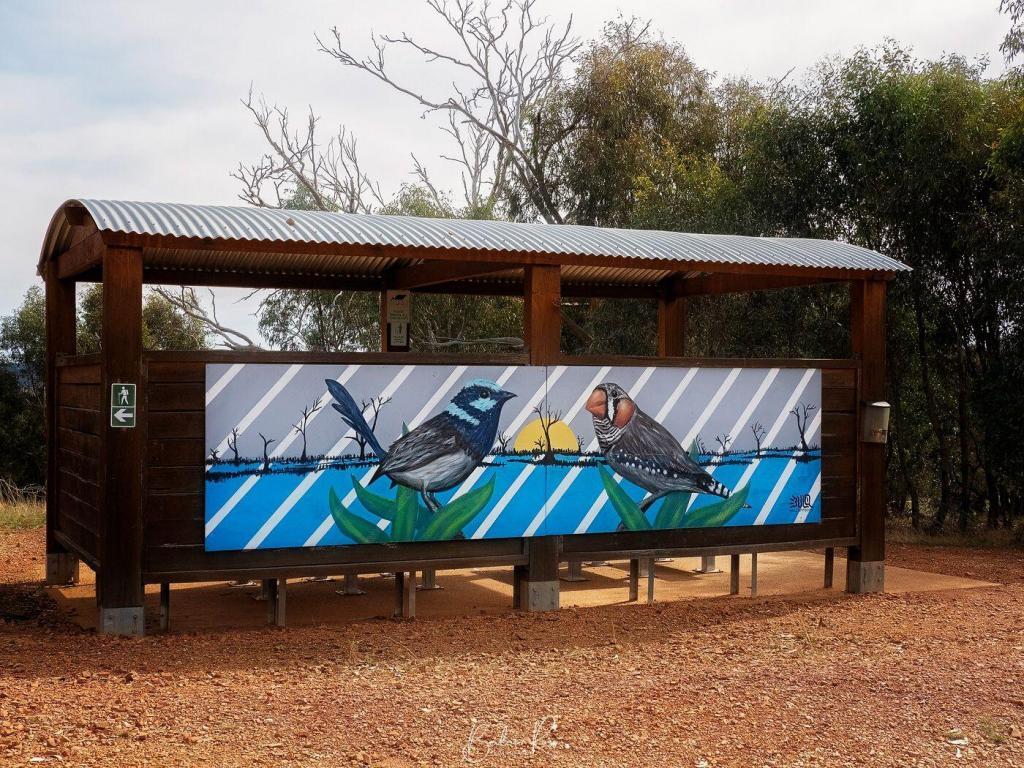
Bird Populations
Since 2013 the Birdlife Murray Goulburn group has undertaken quarterly bird surveys at the wetlands. Over time, there has been an increase in the bird species visiting the wetlands. In their last survey, they noted 168 species across 16 sites. The most abundant species were Sulphur-Crested Cockatoos and Grey Teals. However, Red-rumped Parrots, Galahs, Magpies, Tree Martins, Welcome Swallows, White Plumed Honeyeater, Pacific Black Duck and Superb Fairy Wren were also seen. We saw plenty of Cockatoos, Pacific Black Duck, Herons, and Magpies on our visit. And one black snake that we steered well clear of.
Wildlife
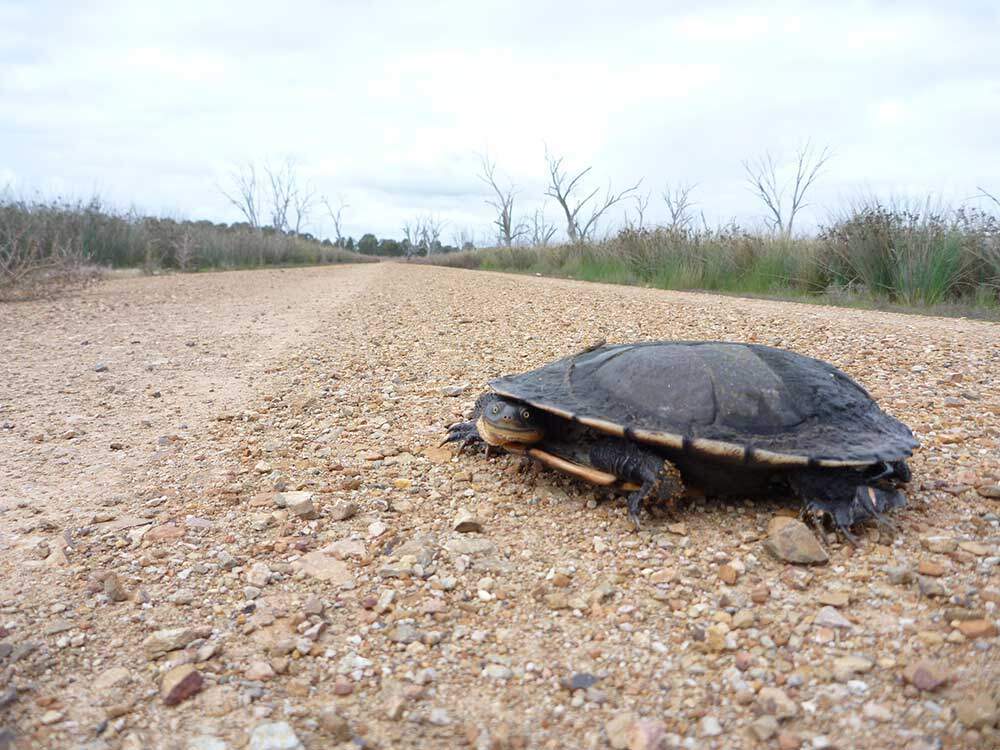
Eastern Long-necked Turtles and Murray River turtles have returned to the wetlands and use the shallow edges of the wetland swamps for laying eggs. They are seen almost daily over October each year as they travel between the swamps laying eggs. Growling Grass Frogs were last recorded in the wetlands in the 1970s. The Winton Wetlands trust is now working toward reintroducing the frogs back to the swamps and hopes to have a small population by the end of 2022.
River Red Gums

The flooding of the wetlands in the 1970s also caused the death of 1500 river redgum trees. Their skeletal trunks and branches still line roads within the wetlands today. Telegraph poles also dot the landscape. They were the only means of communication for the far-flung farms in the early days. It’s an eerie, silent and still landscape. With no sound save for the occasional screeching cockatoo, its not hard to imagine the isolation of the original farmers.

The charming town of Nagambie is just 138 km from Melbourne. Situated on the Goulburn Valley Highway, it’s around halfway between Seymour and Shepparton in the heart of the Nagambie Lakes wine region. It is full of history, horse studs, vineyards and waterways. Nagambie was named in 1872, and in the local aboriginal language means “still waters”. The area is well known for its beautiful lake, attracting fishermen, rowers, and water skiers.

Black Caviar Statue
Black Caviar’s life-sized bronze statue is located at Jacobson’s Outlook in High Street Nagambie. Created by sculptor Mitch Mitchell, the statue was formally opened in October 2013. The statue is based on a photograph of jockey Luke Nolen riding Black Caviar in the Schweppes Stakes at Moonee Valley in October 2011.

Champion racehorse Black Caviar was born on 18 August 2006 at Gilgai Farm, Nagambie, growing up to become the fastest horse globally, winning all 25 of its races and earning $8 million in prize money. In 2013, Black Caviar retired from racing.

Lake Nagambie
Behind the Black Caviar statue lies beautiful Lake Nagambie. It is man-made and the largest body of water in the area covering 170 hectares. Before the construction of the Goulburn Weir, the “lake” was a swampy lagoon. Since its creation, however, it has become an increasingly popular destination. Fishing is a hugely popular pastime on the lake. The annual Go Fish Nagambie takes place each February and sees fishermen vying to catch the biggest Murray Cod for an $80k prize. In addition, rowing and yachting regattas, including the ‘Head of the River’, occur on the lake. Lake Nagambie recently also hosted the International Rowing Championships.
The lake’s eastern shore follows the tree-lined High Street with a wide centre median boasting a grassy picnic area with tables and public toilets.
Jacobson’s Outlook
A Methodist church originally stood on the site where Black Caviar now stands. The church was built in 1855 by the townspeople and stood for 118 years. However, in June 2003, a semi-trailer veered off the highway, colliding with the church. The semi-trailer came to rest inside the church, which resulted in the collapse of the building.
Goulburn Weir

The historic Goulburn Weir was built between 1887 to 1891 to regulate water flow for irrigation in Victoria. It is the first significant diversion structure building for irrigation in Australia. The dam wall is 209 metres long and 16 metres high. The Goulburn Wier diverts water via the Stuart Murray Canal and Cattanach Canal for later irrigation of nearby farming crops. The design of the Goulburn Weir was considered very advanced. It was so unique that the back of half sovereigns and ten shilling notes featured the design from 1913 to 1933.

The weir also contained one of the first two hydroelectric turbines in the southern hemisphere. In 1983 and 1988, stabilising and refurbishment works were undertaken. However, two original gates and gear have been preserved to recognise their place in Victoria’s history. The lush park around the weir includes a playground, picnic tables, electric BBQs and public toilets.
Kirwin’s Bridge

The heritage-listed Kirwin’s Bridge is a short 6km north of the lake. Kirwin’s bridge is a single-lane timber bridge, 310 metres long. The bridge opened in 1890 and is still used today for motor traffic. It features a unique design with a mid-river bend and two passing bays for vehicles. Kirwins Bridge is one of Victoria’s oldest timber bridges still in operation.
Chinamans Bridge

The heritage-listed Chinamans Bridge opened in 1891 and is another of Victoria’s oldest surviving timber road bridges. The bridge was one of several “strutted-stringer” river bridges built in Victoria. However, its timber lift span made it unique, which was constructed to allow riverboat traffic to pass under. The bridge takes its name from the Chinese market gardeners who farmed the rich soils of the Goulburn River.
Royal Mail Hotel


The Royal Mail Hotel is known by locals as the ‘The Top Pub’ and sits on the top end of High Street. Built in 1871, it was originally a stopover for mail delivery for Cobb & Co. and passenger accommodation.
Tahbilk Winery
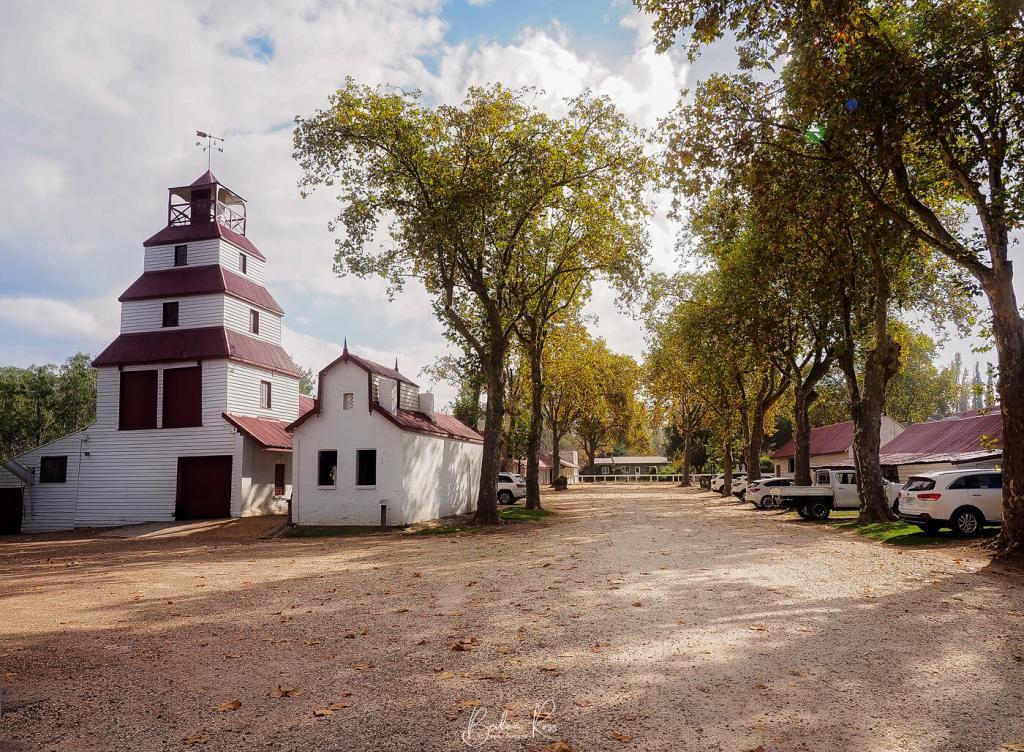
The handmade brick and mudstone winery was built alongside the Goulburn River in the 1860s. Tahbilk celebrated its 160th birthday in 2020 and has been in the Purbrick family for five generations. As a result, Tahbilk is recognised as the oldest winery in Victoria and gained heritage status in 2004. The area Tabilk-Tabilk, meaning “place of many waterholes”, by the local Daung-wurrung clans. The cellar door is open daily, and the original underground cellar is still available for visitors to wander through.

Cellar Door Hours
Weekdays 9 am to 5pm Weekends and Public Holidays 10 am to 5pm
Tahbilk Eco-Trail and Wetlands Walk
Behind the Tahbilk Wetlands View Restaurant lies a hidden oasis of wetlands and a walking trail. The 6.3km trail follows the Goulburn River as it meanders through billabongs, river flats, bridges, bird hides and past lily ponds. Visitors must register at the restaurant before beginning the walk. Dogs are not permitted on the trails. In addition, on days of a total fire ban, the walk is closed.
Mitchelton Winery

Famous Architect Robin Boyd CBE (1919-1971) drew up the plans for the winery, cellar door and tower, and renowned architect Ted Ashton completed them. The first crop of vines were planted in 1969. The winery was named after historic explorer Major Thomas Mitchell.

The iconic building opened in 1974 and boasts a world-class restaurant surrounded by lush lawns, making it a popular destination for outdoor concerts in the ‘on the green’ setting. Gerry Ryan OAM purchased Michelton in 2011. A $16m luxury boutique hotel and day spa were added in 2016. The ‘Airstream Hotel’ opened in 2020 with seven full-sized, sparkling silver RVs for guests. The winery has vineyards in Nagambie and Heathcote and purchases grapes from growers across Victoria.
Cellar Door HOURS
Open 7 Days Mon-Thurs 10:00 am – 4:00 pm and Fri-Sun 10.00 am – 6.00 pm for Wine Tastings, Education and Wine Sales.
The Wedge-tail Eagle, known colloquially as a ‘wedgie’, is the largest Australian raptor (bird of prey), standing at a metre tall. A truly magnificent bird, the Wedge-tail Eagle has an average wingspan of 2.3 metres though it can be up to 2.8 metres. They are Australia’s biggest bird of prey and one of the biggest eagles in the world and are similar in size to the American Bald Eagle. The Wedge-tail Eagle has a pale pink to cream beak, dark brown eyes, off-white feet and a wedge-shaped tail. They have a lifespan of 20 to 40 years. Males are 3.2 to 4 kg, while females are a slightly paler colour, larger and heavier at 4.2 to 5kg. Both sexes become progressively darker for the first ten years of their life.
Habitat & Distribution

The Wedge-tailed Eagle prefers wooded, forested land and open county. However, they can also be found in the mountains, near the sea, soaring in the air, or high in trees surveying their territory. The Wedge-tail is located in mainland Australia, Tasmania, and New Guinea. However, the Tasmanian Wedge-tail eagle is a distinct sub-species with genetic testing revealing the two species separated 200 to 1000 years ago. The Tasmanian population was established by mainland individuals flying across Bass Strait. Tasmanian Wedge-tails are darker in colour, have larger bodies and produce only one egg per clutch.
Diet

The Wedge-tails’ primary food source is carrion, preying on ground-dwelling animals and attacking with a fast swooping motion. Their diet consists of rabbits, mammals, lizards, possums, foxes, feral cats and carrion, and the eggs of other birds. They can carry prey up to 5kg in weight in their talons.
Eyesight
The Wedge-tail has binocular vision in which they can see their prey from great distances and in 8 times more detail than humans. In addition, their uniquely adapted eyes allow them to squeeze and extend their eyeball, enabling them to use their eyes similar to the zoom lens on a camera. Eagles have a third eyelid called the nictitating membrane. This eyelid is translucent and sweeps quickly across the eye from the inside corner. The eagle will sweep the nictitating membrane across the eye every few seconds to moisten and lubricate it. While it’s not completely clear, it still allows them to see.
Breeding
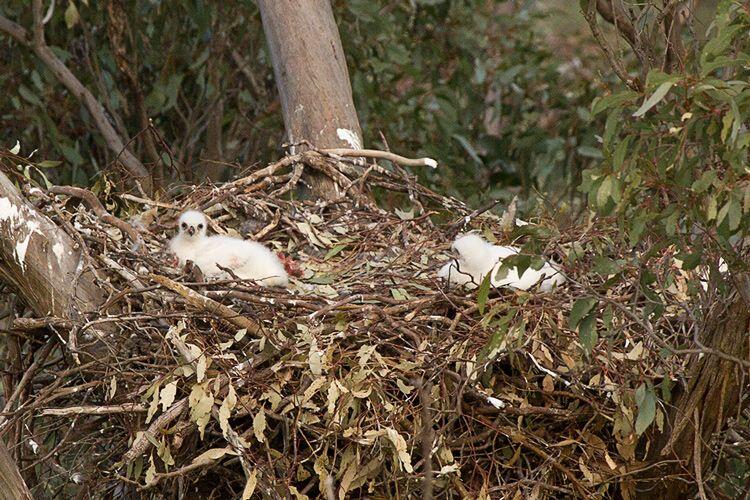
The breeding season occurs from June to October. They are monogamous, mating for life. Both the male and female groom each other during the breeding season. They build the nest together from sticks and leaves in the tallest tree in their area. The nest measures up to two metres wide and three metres deep. They often reuse the same nest year after year. A breeding pair usually only lays one clutch of eggs a year.

The female Wedge-tail lays a clutch of between 1 to 3 eggs over several days. Because of this, the eggs also hatch at different times. The female primarily incubates the eggs, while the male lines the nest daily with fresh leaves. The eggs hatch after 45 days, and chicks emerge covered in white downy feathers. The first chick that hatches is always the largest and sometimes kills the other chicks. The chicks are dependent on their parents for food for the first five weeks. The young Wedge-tail eagle leaves the nest after 12 weeks. However, they are not fully mature for six to eight years.
Threats

Wedge-tail Eagles are very common in Victoria. Sadly, farmers once considered them a menace. Convinced that the eagles carried off lambs, thousands of eagles were shot or poisoned. Subsequent research has found this false, as they rarely attack healthy lambs and never full-grown sheep. Current threats to Wedge-tails are loss of habitat due to clearing land and secondary poisoning from eating animals that have died from pesticides and baits. Road vehicle accidents also account for many deaths, with cars hitting the eagles while they are on the road eating roadkill. Additionally, wind farms also have an impact on their numbers.

Status
Wedge-tail eagles are protected in Victoria. Their status in Victoria is ‘secure’, and fines of up to $8000 apply to anyone found “killing, harassing or disturbing” the eagles.
While the Great Ocean Road actually starts at Anglesea, the seaside town of Lorne known as the gateway due to the Memorial Arch. Lorne is a popular spot for surfers, with thriving shops and cafe culture. There is an arts community, Qdos ARTS, with a gallery and sculpture park at Lorne. In addition, Teddy’s lookout, the Memorial Arch, and many waterfalls are just out of town.
The Memorial Arch
The Great Ocean Road was built in memory of Australians who lost their lives in World War One. At 240km long, the road is officially the world’s largest war memorial. The current arch is the fourth iteration of the arch. It spans the road at Eastern view – the site of the original toll booth that helped fund construction costs. It was rebuilt in 1974 after a truck hit the arch and demolished one side. 1983 saw the Ash Wednesday bushfires destroy the arch again, leading to a new metal arch built to resist fires. In 1990 a storm brought the arch down once more, resulting in the last rebuild.
Surprisingly the original “great ocean road” sign has survived the fire, storm and truck. It has been rehung over the arch each time the arch was rebuilt. A sculpture to the left of the arch depicts two men working on the road alongside two plaques added for the 50th and 75th anniversary of the road.
Teddys Lookout

Teddys Lookout is located at 53 George St, Lorne, Teddy’s lookout gives one of the best views of the road where the St George River empties into a small cove. Park at the end of George St, and then it’s a short walk to the two lookouts.
Erskine Falls
Where: Erskine Falls Access Road, Lorne
A 10km drive out of Lorne will bring you to Erskine Falls. Two lookouts on this well-known waterfall offer scenic views of water cascading 30 metres down into a gully. A short walk from the carpark brings you to the first lookout. You can take the 310 steps down to the lower lookout if you have a good fitness level.
Lorne Beach
Lorne beach has two distinct sections. The surf beach and the Main Beach. The sheltered 2km Main beach is located on the coast of Louttit Bay near the Lorne Swing Bridge. The main beach is the only part of the coastline that Life-Saving Victoria patrols during the summer months. The surf beach is on Mountjoy Parade.

The Rainbow Lorikeet is one of seven species of lorikeet and is native to Australia. They can be found all along the east coast of Australia, from northern Queensland through to South Australia. While they are similar in size to the Eastern Rosella, their brightly coloured plumage makes them easily distinguishable.

Habitats
The habitat of the Rainbow Lorikeet is coastal bushland, woodland, mangroves, rainforests and urban areas. They are communal roosters and join up into large, noisy flocks in the evening and early morning. However, they travel mainly in pairs. They are territorial birds, and each pair will aggressively defend its nesting and feeding area against all other birds. This aggression extends to larger birds as well as other Rainbow Lorikeets. They roost in treetops and rarely come to the ground.

Diet
Rainbow Lorikeets are herbivores and feed mainly on fruit, pollen and nectar. Their unique tongue is adapted to their diet and is long and flexible, allowing them to reach the nectar deep inside the flower. The tip of the tongue features a ‘bristle brush’ that helps lap up the nectar. Rainbow Lorikeets are the only birds in the world with this type of tongue. In addition, their muscular gizzard and intestinal tract are shorter than most birds. This makes consuming nectar highly efficient but ineffective at digesting seeds. While nectar forms most of their diet, they will also consume soft fruits such as apples, grapes, pears or figs, grains, insects, or larvae.
Breeding and lifestyle
Rainbow Lorikeets are monogamous and generally mate for life. They nest in tree hollows of eucalypts, paperbarks, honey myrtles and tea trees, choosing deep hollows from three to thirty metres off the ground to provide a safe nest away from predators. The female will lay 1-2 white, oval eggs up to three times a year. While their habitat includes rainforests, they prefer open country for nesting and generally don’t nest in rainforests. In Australia’s South and Eastern parts, they nest from August to January. In all other parts of Australia, nesting occurs year-round except for March. When the chicks hatch, they have no feathers and closed eyes. The fledgelings leave the nest after 54 to 57 days and join the communal roost. The Rainbow Lorikeet lives up to ten years in the wild and twenty-five years as pets.

Lorikeets as Pests
The Rainbow Lorikeet is considered a feral species in Western Australia (WA) after being accidentally released in 1968 from the University of WA campus. It is estimated there are now over 40,000 Rainbow Lorikeets in the wild in WA. The Department of Agriculture in WA has declared the Rainbow Lorikeet a ‘declared pest’ due to its behaviour of damaging fruit crops and bullying native birds out of their nesting sites. Consequently, they are considered a significant threat to declining birds species in WA, such as the Red-capped Parrot, Western Rosella, Australian Ringneck. The Rainbow Lorikeet is also a threat to the endangered Carnaby’s Black Cockatoo, Forest Red-tailed Black Cockatoo and Baudin’s Black Cockatoo.

Illegal releases of aviary birds in New Zealand in the 1990s resulted in a feral population of 150 to 200 birds. Subsequently, a live capture initiative from 2000 to 2002 eradicated them from the wild. However, they are also emerging as an invasive threat in Tasmania, where they compete for food and nests with the Musk Lorikeet, Swift Parrot and Green Rosella. Flocks of up to 100 birds have been spotted around the state though exact numbers in Tasmania are unknown. This has prompted authorities to trial a trapping program.
Across Victoria, the sunflowers are blooming. Fields of tall, large plants with daisy-like flower faces turned the sun attract photographers and tourists alike. To get the best results, plan how to photograph sunflowers before you head out to the fields.

Sunflowers in Victoria bloom from January to March.
Gear to Use
While you can use a phone camera – your best shots will come using a DSLR or Mirrorless camera. A lens such as the 12-24mm or 24-70mm range will work for all your shots if you photograph the sunflowers themselves. If you wish to shoot portraits against the fields, then go for a focal range of 35mm-85mm. If you want to shoot close-ups of the sunflowers, then a macro works best. But unless you have rock-steady hands (I don’t), put the camera on a tripod when using the macro.

Camera Settings
Firstly – shoot in Aperture Priority mode. If you are shooting portraits and want the narrow depth of field with background bokeh, then set your F stop at F/1.8 to F/2.8. For landscape shots, use F/16 to get as much in focus and sharp as possible. Keep your ISO as low as possible, ideally at ISO 100 or 200.

Shooting a model
If you are photographing people in the field, colour coordination becomes important. Ask your subject to wear white or blue clothing. They will need to avoid yellows and greens, or they will vanish into the field.

Focus Stacking
This isn’t completely necessary – and if you do, then use the tripod again. But if what is nearest to you is out of focus and the rest in focus, focus stacking will help if you want the entire scene in focus.
Best conditions for sunflower fields
Ideally, the best time is overcast days with no harsh shadows. However, that means you miss the beautiful blue skies (unless you sky swap with Luminar). Shooting at golden hour produces the best light – but most fields don’t open to visitors that early or late. To avoid the harsh shadows on a sunny day, try to time your shots to avoid the midday to 3 pm window.

Details
Don’t forget the back of the sunflower or the buds that haven’t bloomed yet. They are still interesting subjects.

Perspective
Get down low or go higher. Using a wide angle, try laying on the ground and shooting up through the flowers. Bring a step ladder along and get above the flowers.
Sunflower fields
Sunflower fields are not as plentiful as canola fields. And those that allow access are even fewer. The largest sunflower field in Victoria that allows visitors is Pick Your Own Sunflowers at Navigators Road, Dunnstown near Ballarat. Entry is $5 per person.

